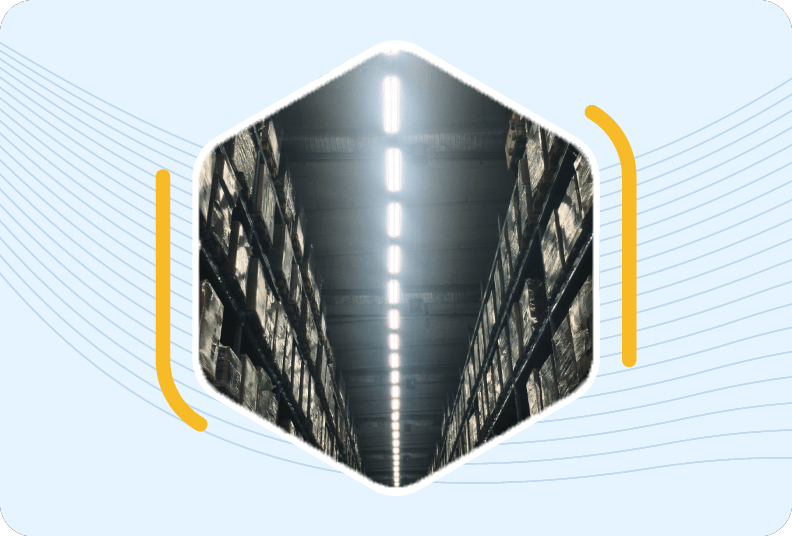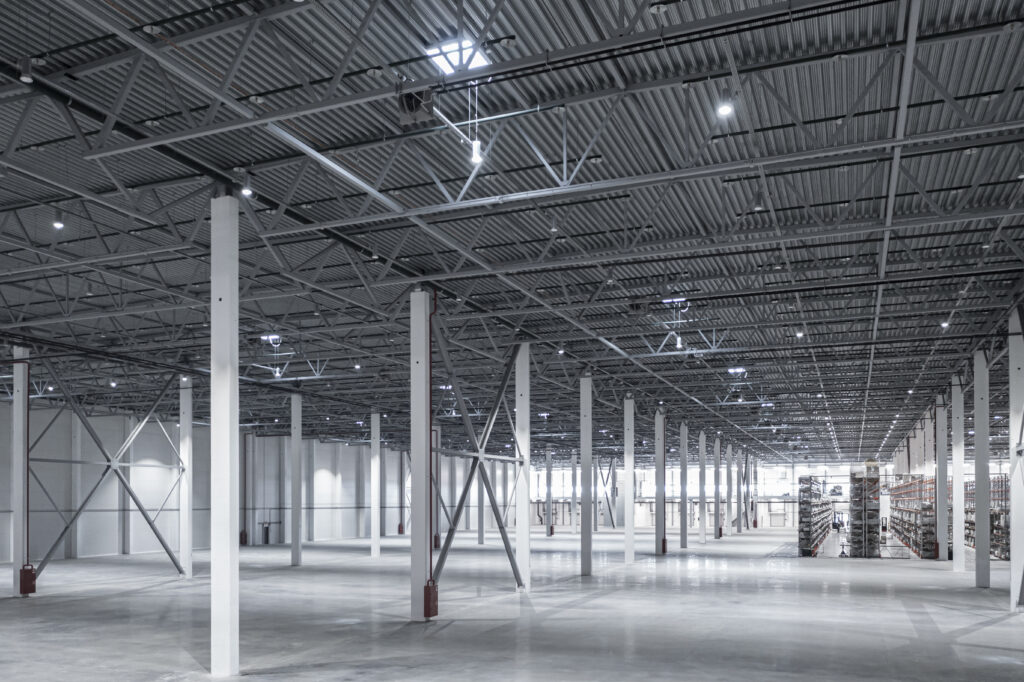Upgrading to LED warehouse lighting in Southern California can transform your workspace with greater safety and efficiency. These lights save energy while improving brightness, providing better visibility for tasks and increasing overall productivity. In this guide, we explore key factors to consider for the best results, helping you choose the right LED lighting for your unique needs.
Benefits of LED Warehouse Lighting in Southern California
LED lighting offers many benefits, from cutting energy costs to providing consistent light. These lights last longer, reducing the need for replacements and maintenance. They are also eco-friendly, emitting less heat than traditional bulbs.
Table of Contents
- Understanding LED Technology
- Importance of Brightness Levels
- Choosing the Right Light Color
- Energy Efficiency and Cost Savings
- Installation Tips
- Safety Considerations
- Maintenance and Durability
- Environmental Impact
- Case Studies in Southern California
- Future Trends in LED Warehouse Lighting
Understanding LED Technology
Before diving into LED warehouse lighting in Southern California, it’s crucial to understand the technology. LEDs, or Light Emitting Diodes, are energy-efficient light sources that offer numerous benefits over traditional bulbs. They work by producing light through a process called electroluminescence, eliminating the need for filaments or gases used in incandescent or fluorescent lights.
LEDs are known for their longevity and durability. They can last up to 25 times longer than traditional lighting, reducing the need for frequent replacements. This durability means lower maintenance costs, making them an excellent investment for warehouses looking to improve productivity and lower expenses.
Unlike traditional options, LEDs come in a range of colors and brightness levels, allowing you to choose the best fit for your warehouse’s needs. Their versatility ensures a safe and efficient environment for your team.
Importance of Brightness Levels
Brightness levels play a key role in warehouse lighting. Adequate lighting can improve worker performance and reduce accidents, while poor lighting may lead to errors and safety risks. When choosing LED lighting, it’s important to consider the required brightness for each area of your warehouse.
Lighting needs can vary based on the activities performed. For instance, areas with detailed tasks like inventory checks require brighter lighting than storage spaces. Opting for LED lights with adjustable brightness can help adapt to different tasks and save energy.
Measuring Brightness
Brightness is measured in lumens. The higher the lumens, the brighter the light. Here’s a quick reference for typical warehouse needs:
- Storage rooms: 300-500 lumens
- Packing areas: 500-750 lumens
- Detailed workspaces: 750-1000 lumens
Choosing the Right Light Color
Color temperature, measured in Kelvin (K), impacts mood and efficiency. For warehouses, it’s important to strike the right balance between comfort and productivity. Warm lights, around 2700K, create a cozy feel, whereas cooler lights, 5000K and above, simulate daylight and are ideal for work environments.
For most warehouse settings, a light temperature between 4000K and 5000K is recommended. This range offers clear visibility without causing eye strain. Consider conducting trials in different areas to determine which color temperature best suits your space.
LEDs offer the benefit of color consistency, meaning they don’t fade or change color over time. This feature maintains uniformity across the warehouse, ensuring reliable and predictable lighting conditions for all employees.

Energy Efficiency and Cost Savings
One of the most compelling reasons to switch to LED warehouse lighting in Southern California is the energy efficiency. LEDs use about 75% less energy than incandescent lighting, significantly cutting utility expenses. This efficiency doesn’t mean sacrificing brightness or quality.
Moreover, the lifespan of LEDs, often exceeding 50,000 hours, means fewer replacements and lower overall costs. Simple math shows that the initial investment in LED lighting pays off over time through reduced energy bills and maintenance costs.
In Southern California, where electricity rates can be high, tapping into these savings is particularly valuable. The return on investment is not just financial but also contributes to a more sustainable business model with reduced carbon footprints.
Installation Tips
Proper installation is key to maximizing the benefits of LED lighting. Consider these tips:
- First, evaluate the layout of your warehouse. Understand the areas that need the most lighting. Installing recessed lighting or strategically placed overhead fixtures ensures full coverage.
- It’s advisable to work with professional installers familiar with LED systems. They can help identify the optimal placement and setup to save time and avoid complications, like wiring issues, that can arise during DIY installations.
- Proper height and angle adjustments can lead to better light distribution and minimize shadows. This helps maintain consistency and safety throughout the facility. Remember, even modern systems require maintenance checks, making it important to establish a regular schedule for inspection and cleaning to ensure longevity.
For expert help, explore our professional services to ensure your installation is done right.

Safety Considerations
Safety can’t be overlooked when installing LED warehouse lighting in Southern California. LEDs can reduce workplace accidents by providing clear and consistent lighting. Slips, trips, and falls are less likely when employees can see their surroundings clearly.
Additionally, LED lights generate less heat than traditional bulbs, minimizing the risk of fire hazards. This is particularly important in warehouses storing flammable materials. They also do not contain harmful chemicals like mercury found in some traditional bulbs, making them safer for both workers and the environment.
Always ensure that your lighting meets the relevant safety standards and regulations. Consulting with experts can be a wise step to ensure compliance and to check that all safety protocols are followed during installation.
Maintenance and Durability
LEDs are known for their low maintenance requirements and impressive durability. Unlike traditional lighting, LEDs do not have filaments or glass enclosures that can break easily. This design choice translates into fewer replacements and repairs, saving you time and money in the long run.
Prolonging Lifespan
To maximize the longevity of your LED lights, consider the following:
- Clean fixtures regularly to prevent dust accumulation.
- Use surge protectors to avoid electrical overloads.
- Schedule periodic inspections to catch any issues early.
These practices will not only enhance the lifespan of your lighting system but also maintain optimal performance, making your investments worthwhile.
Environmental Impact
Switching to LEDs is not just a smart financial decision; it’s also an environmentally friendly choice. LEDs use significantly less energy, which reduces your warehouse’s carbon footprint. This shift contributes positively to combatting climate change.
LEDs lack toxic elements like mercury, found in fluorescent lights. This makes disposal safer and simpler. By choosing LEDs, you’re committing to a greener future for Southern California, promoting eco-friendly business practices.
Additionally, many LED lights are recyclable. Check with local waste management services to find out how you can recycle old bulbs responsibly.
Case Studies in Southern California
Numerous businesses across Southern California have seen transformative changes after switching to LED lighting. Let’s explore a couple of examples:
A large distribution center in San Diego noted a 40% reduction in energy costs after upgrading to LED lights. The improved visibility also led to a 20% drop in workplace accidents over a year. Employees reported better morale and productivity due to the enhanced lighting conditions.
Similarly, a manufacturing facility in Los Angeles successfully transitioned to LEDs and saw an increase in efficiency. They were able to modernize their lighting infrastructure without breaking the bank, showcasing the economic and operational benefits of LEDs. For more inspiration, explore client testimonials from satisfied businesses.
Future Trends in LED Warehouse Lighting
LED technology continues to evolve, promising even greater enhancements for warehouse lighting in the future. One notable trend is the integration of smart lighting systems. These systems use sensors and automation to adjust lighting based on occupancy and natural light levels, further boosting energy efficiency.
Another exciting development is the rise of tunable LEDs. These allow users to adjust the color temperature dynamically, catering to different needs throughout the day or even specific tasks. This adaptability can optimize comfort and productivity further.
Moreover, advances in energy storage and battery technology could eventually lead to entirely self-sustaining lighting solutions using renewable energy sources. When considering the future, trust expert electricians who can guide your warehouse toward the latest innovations.
As technology advances, keeping an eye on new products and solutions ensures that your warehouse remains at the forefront of lighting innovation.
John B is the head electrician at Specialty Electric, where he brings over 15 years of dedicated experience to every project he handles. Known for his technical expertise and meticulous attention to detail, John specializes in high-end electrical installations and advanced troubleshooting. His commitment to safety, efficiency, and the latest industry standards makes him a trusted name among clients seeking reliable and innovative electrical solutions.


